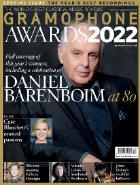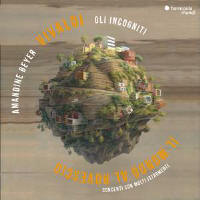Texte paru dans: / Appeared in: |
|
|
Outil de traduction |
|
|
Il mondo al rovescio – the world upside down. This was the original title of the Concerto in F that lends its name to this exceptionally colourful Vivaldi programme from Amandine Beyer and Gli Incogniti. Composed apparently in Rome either in 1723 or 1724, when Vivaldi was in charge of the opera season at the city’s Teatro Capranica, the work began life as RV544, a duo for violin and cello of striking ambitiousness and individuality, the solo lines written so the pair are able to swap parts, thus making for a sort of musical joke. Vivaldi was so satisfied with the results that he produced the expanded version recorded here, RV572, in which the soloists are doubled by flutes, oboes and harpsichord to create a joyous grand meeting of contrasting timbres and parallel octaves, topped by an alternative title that added grandeur to the existing title’s intrigue – ‘Il Proteo’, after Proteus, the shape-changing sea god.
Essentially, it’s the sort of work guaranteed to get a crack band of baroque virtuosos excited. That certainly appears to have been the case here: while there aren’t all that many recordings of RV572 compared to RV544, I’d say that this reading trumps both the Orchestra of the Age of Enlightenment (Linn, 4/01) and Ensemble Matheus (Pierre Verany) in the first movement for superglued-together ebullience, crisp-edged pep, forwardthrusting drive and an overall impression of pulse-racing virtuosity, even if at times the oboes dominate in the balance at the expense of the solo cello and harpsichord.
It’s perhaps the remainder of this programme that I’ve found myself most enjoying, though. Take the many-shaded suppleness of traverso player Eleonora Biscevic’s darting lines over the Flute Concerto in E minor, RV432, or RV566 in C, dating from the mid-1720s, which stands as one the earliest known works using the clarinet. The clarinettists Roberta Cristini and Renaud Guy-Rousseau play with ravishing tone, nicely complementing the sweet brightness of Amandine Beyer’s violin-playing.
Indeed, there are many moments where Beyer herself gets to shine. Take the easy brilliance and range of colour she brings to the demanding extended cadenza closing RV562 in D, or her neatly dispatched merriness across the outer movements of RV571 in F (one of the first violin concertos for a ‘Classical’ orchestra – two oboes, two horns and concertante timpani), whose rapid violin figurations and doublestopped passages apparently had Pisendel struggling in 1716. The highlight, though, is actually the silence-imbued central Largo, where Beyer’s floridly ducking and diving embellishments inject a captivating air of capricious freedom to the overall tenderness. In a nutshell, a brilliantly varied programme, brilliantly dispatched.
|
|




